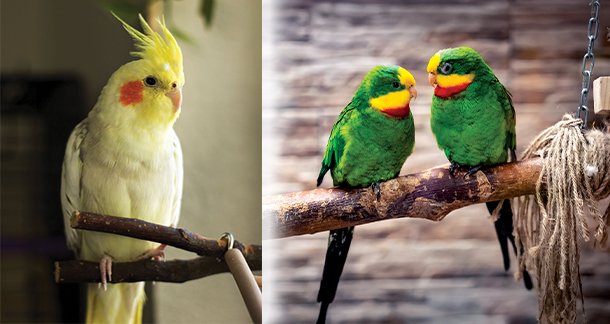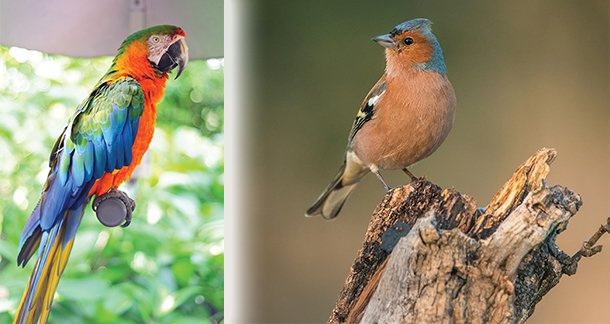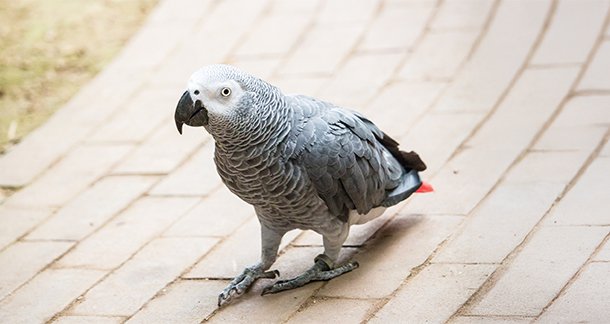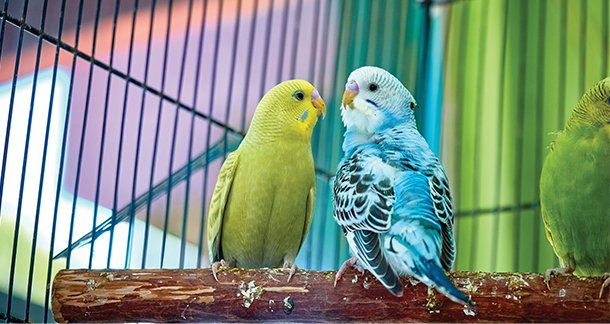Birds are intelligent, expressive, and sensitive companions. While their colorful feathers and cheerful chirps often draw attention, it’s their subtle behaviors, especially around food, that can reveal the most about their well-being. For pet parents, understanding the feeding habits and hunger cues of different bird breeds is crucial to maintaining not just physical health, but also emotional balance.
Below, we explore the common eating behaviors of popular pet birds like Budgerigars (Budgies), Cockatiels, African Greys, Lovebirds, Parrots, and Finches, and how pet parents can decode what they’re trying to say when mealtime rolls around.
- Budgerigars (Budgies)
Feeding Habits: Budgies are small yet active birds with high metabolisms. They usually prefer eating throughout the day in short, frequent bursts. Their diet should include a mix of high-quality seeds, pellets, leafy greens, and occasional fruits.
Hunger Cues:
- Budgies often become restless when hungry, flitting around their cage or chirping louder than usual.
- They may peck persistently at their food bowl or even toss seeds looking for their favorites.
- If underfed, their feathers may look fluffed up and they may lose their usual energy.
Tip: Offer fresh food twice daily and remove leftovers before they spoil. Budgies also enjoy “foraging,” so scattering bits of food to mimic wild behavior is mentally enriching.
- Cockatiels
Feeding Habits: Cockatiels enjoy a combination of seeds, pellets, cooked grains, and soft vegetables. They often nibble rather than gorge, so food should be available during most waking hours.
Hunger Cues:
- They may vocalize in soft whistles when their food bowl is empty.
- Head bobbing or pacing near the food area are common signs of food anticipation.
- If unusually quiet or lethargic, it may signal poor diet or hunger.
Tip: Weigh your bird weekly; subtle weight loss can be the first sign of inadequate feeding, which might go unnoticed through behavior alone.

- African Grey Parrots
Feeding Habits: African Greys are highly intelligent and need a nutritionally balanced diet to support their cognitive and physical health. Pellets should form the base, supplemented with fruits, veggies, and healthy grains.
Hunger Cues:
- They may become irritable or less responsive if hungry.
- Some will call out, make attention-seeking noises, or drop empty bowls to signal the need for refills.
- Feather plucking, though more complex in cause, can sometimes be linked to poor diet.
Tip: Schedule regular meal times. African Greys thrive on structure, and routine feeding helps reduce anxiety and maintain trust.
- Lovebirds
Feeding Habits: Lovebirds love to eat together ,often nibbling with a mate or cage companion. Their diet should include fortified seeds or pellets with leafy greens and small amounts of fruit.
Hunger Cues:
- Chirping near the food area or following their human around is a common cue.
- When excited about food, they may flap their wings while perched or head-bob as a sign of anticipation.
- Be alert for signs of aggression around food , this could mean they’re not getting enough or feel insecure about sharing.
Tip: Always provide multiple feeding stations for bonded pairs or groups to avoid competition and anxiety.

- Parrots (Macaws, Amazons, Conures)
Feeding Habits: Larger parrots like Macaws or Amazons have more complex dietary needs, including nuts, fresh produce, and specially formulated pellets. They enjoy variety and enrichment during mealtime.
Hunger Cues:
- They may vocalize loudly or throw food if unsatisfied.
- Beak grinding or head-bobbing near feeding areas can signal it’s time to eat.
- Parrots may try to ‘share’ your food , this is both a hunger cue and a bonding gesture.
Tip: Use feeding as a bonding activity. Hand-feeding safe treats or incorporating puzzles with food keeps them mentally stimulated.
- Finches
Feeding Habits: Finches are delicate birds that need constant access to small seeds, egg food, greens, and grit. Unlike parrots, they rarely beg or signal overtly.
Hunger Cues:
- Decreased chirping or energy is a red flag.
- Frequent visits to the food bowl or picking at cage bars may suggest hunger.
- Because they eat little but often, they should never be left without food.

Tip: Monitor the food level daily and avoid deep dishes that make access difficult.
Final Thoughts: Mindful Feeding = Better Bonding
Feeding time is more than a biological necessity , it’s a moment of trust, routine, and connection. No matter the species, birds use subtle signs to communicate hunger or food preferences. What seems like quirky behavior is often a cue waiting to be understood.
Birds don’t just survive on what we feed them , they thrive when we feed them thoughtfully. Being observant of their habits, ensuring dietary variety, and respecting their routines builds trust and improves health outcomes. With a little attentiveness and education, we can turn every meal into a meaningful moment of care.
About the Author
Sonechka Mishra is a pet parent to small animals. With her experience in pet keeping from a young age, she aspires to impart knowledge onto other pet owners!

